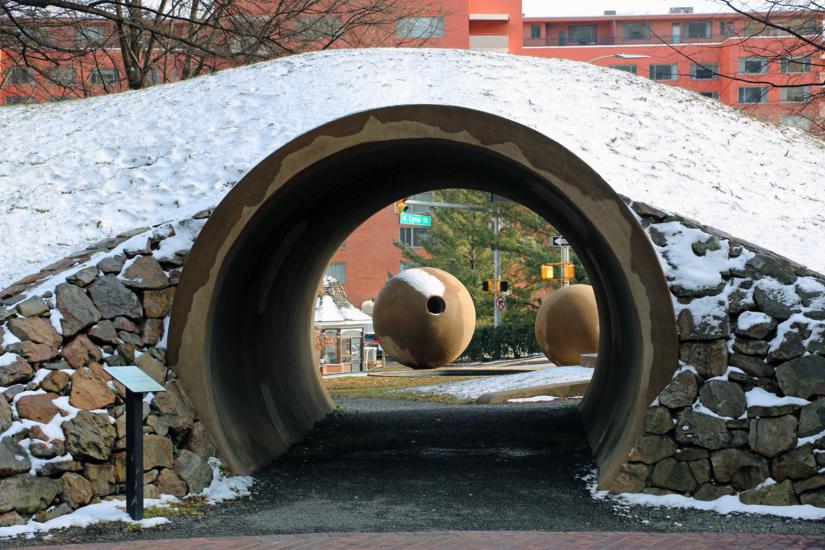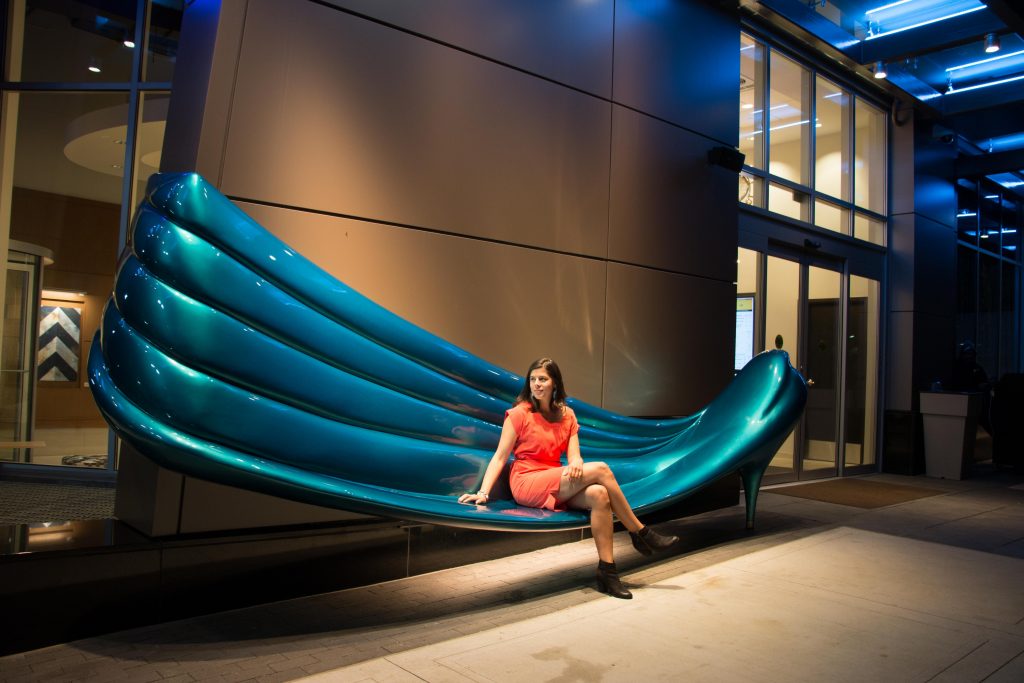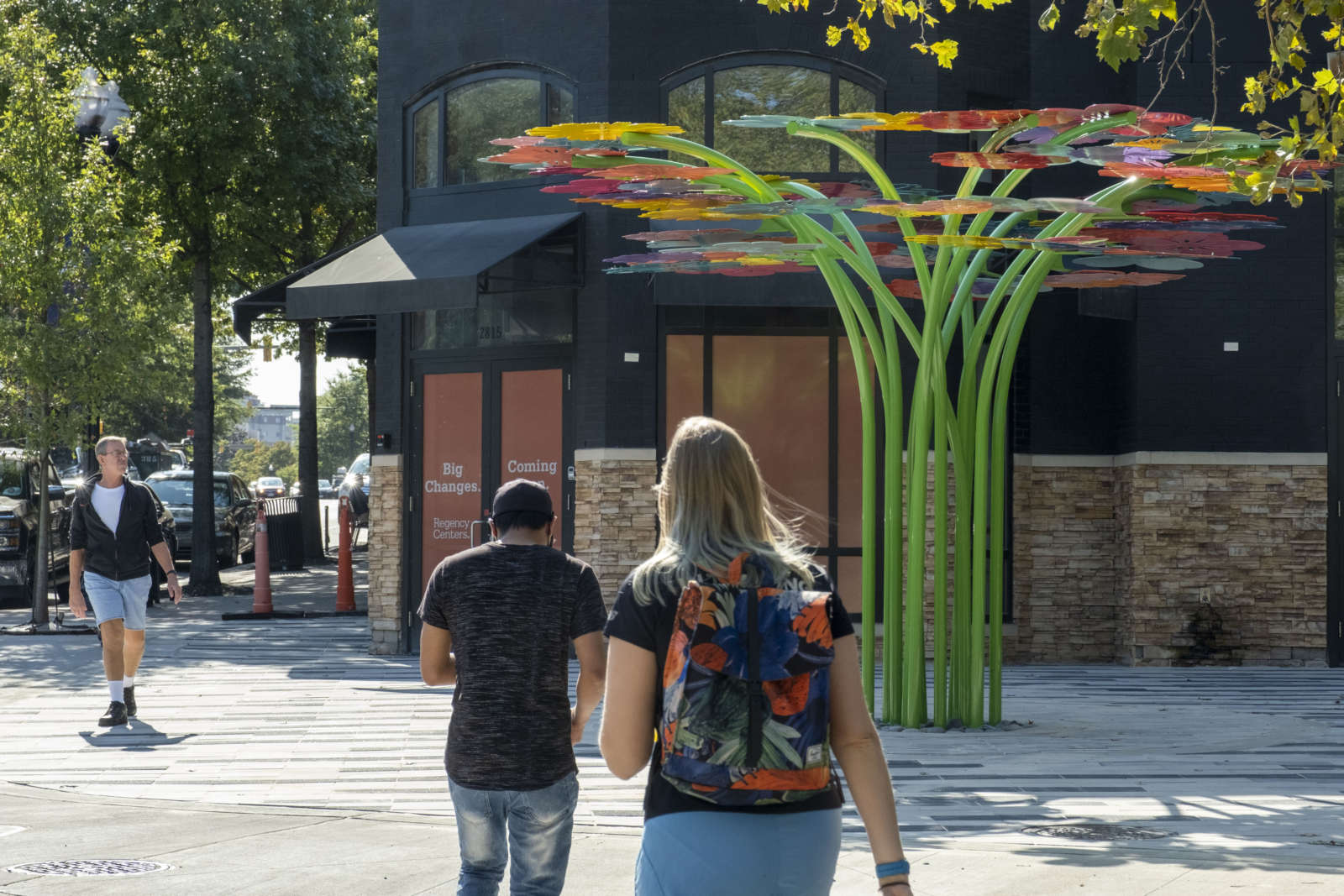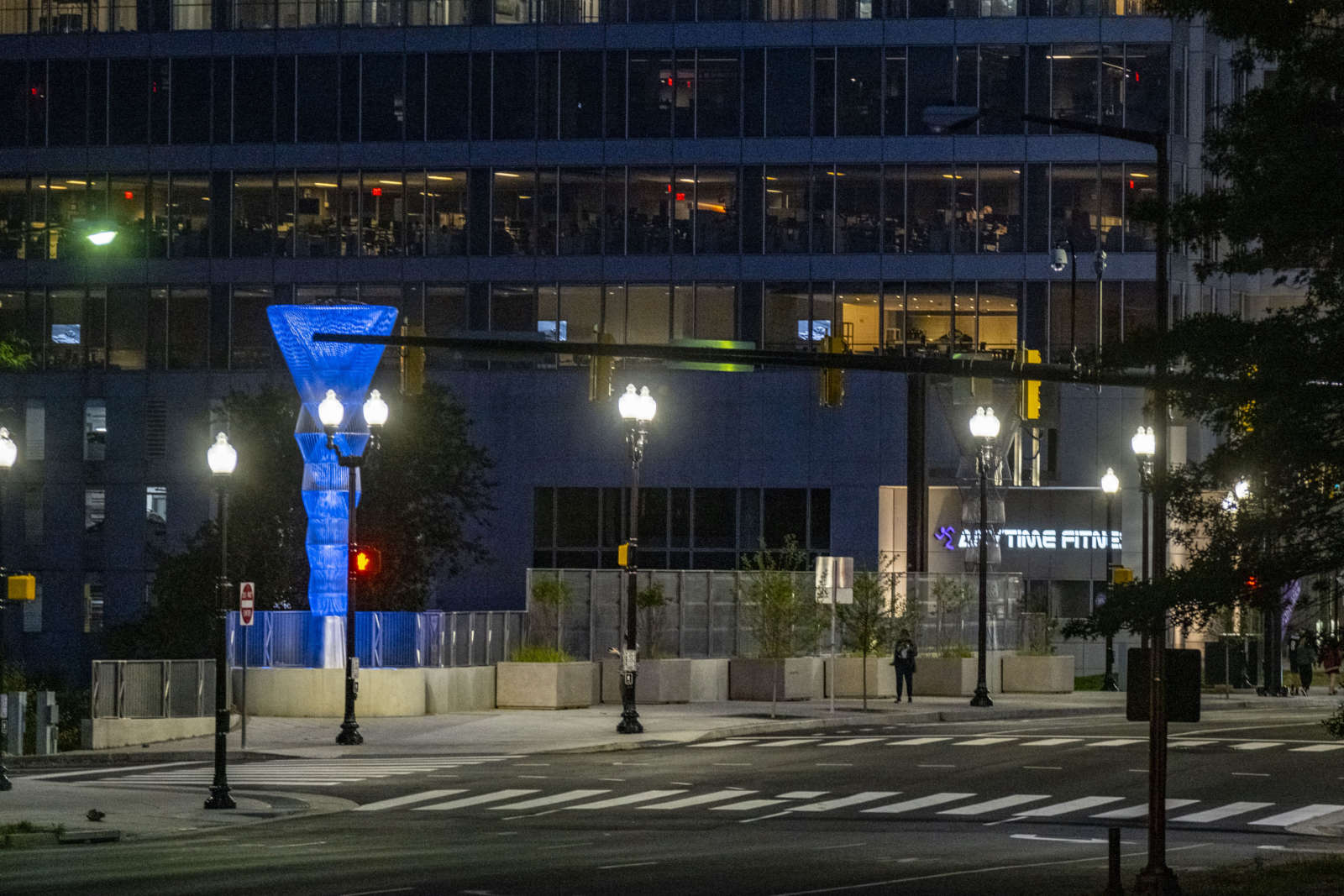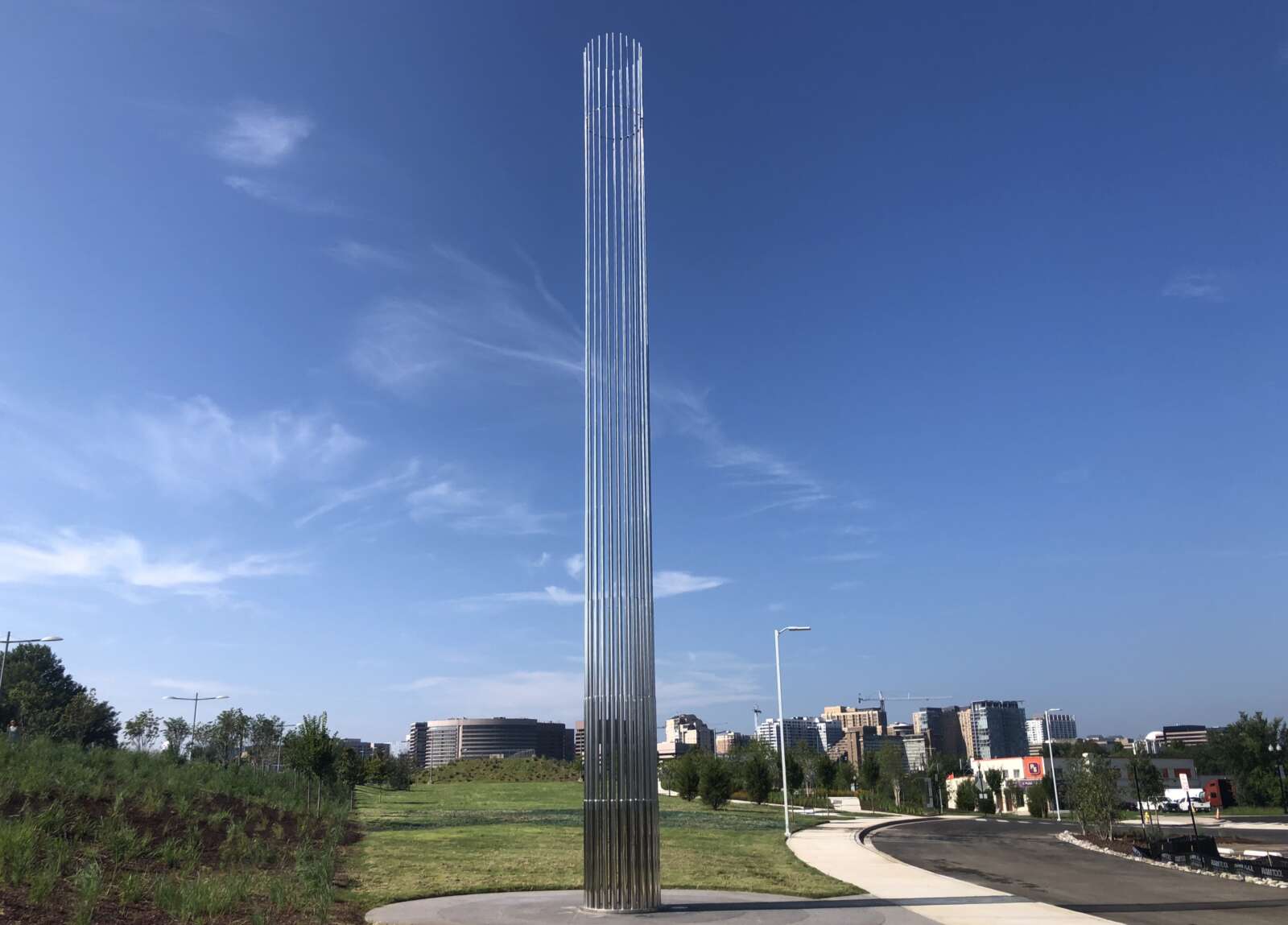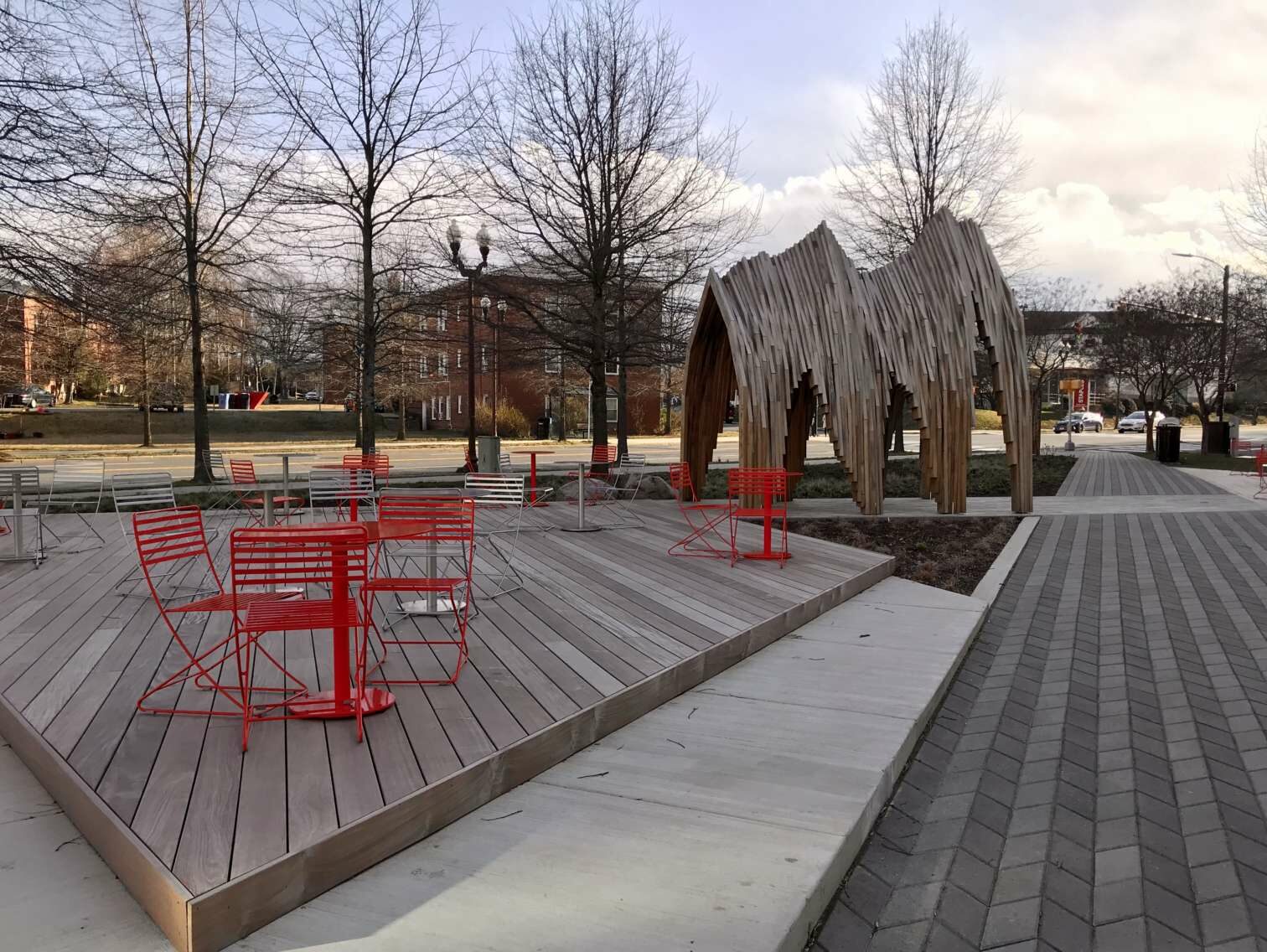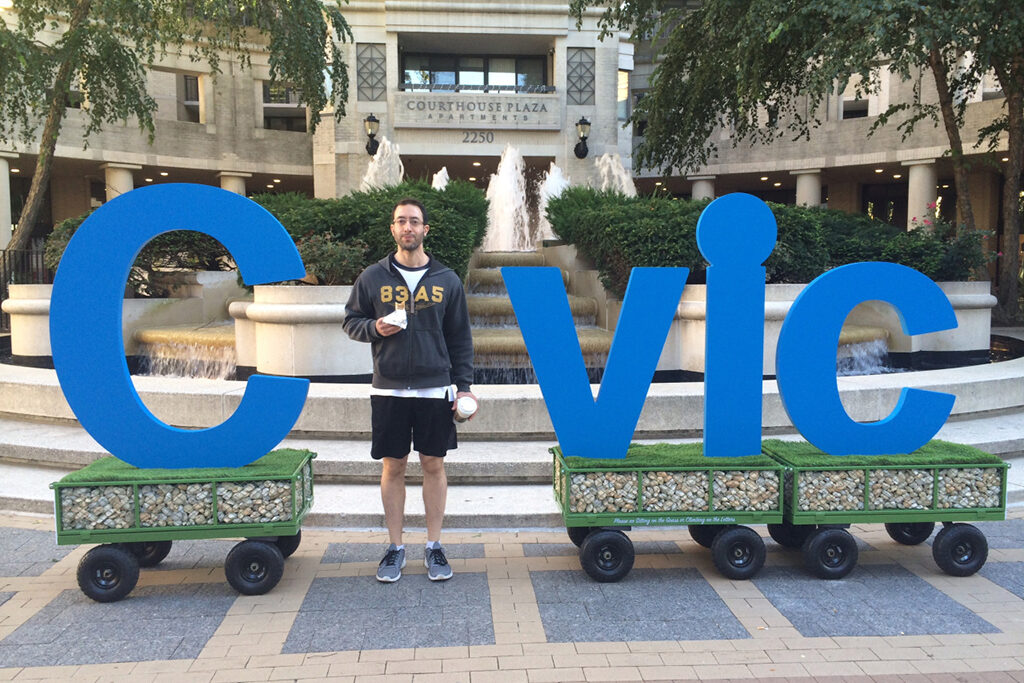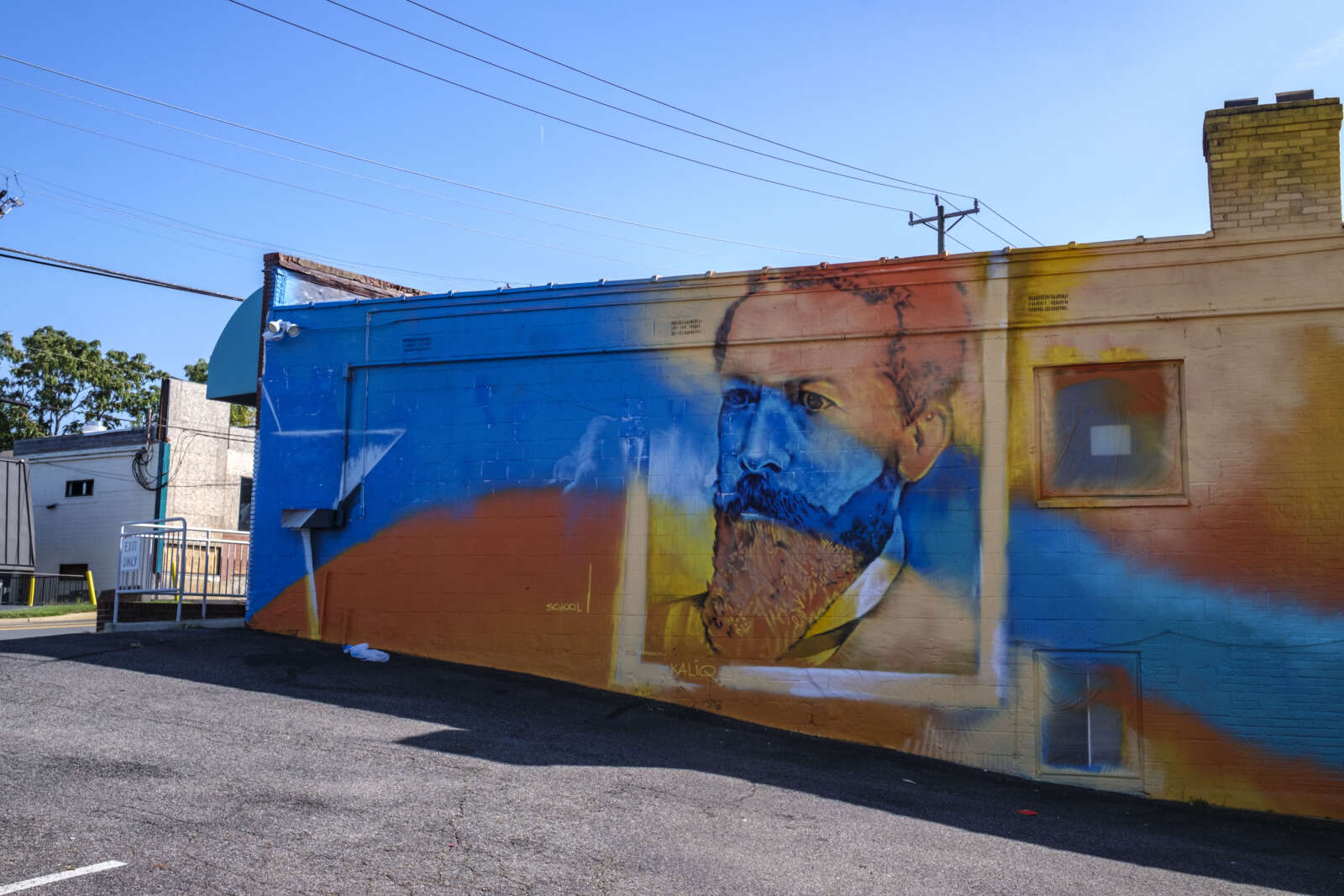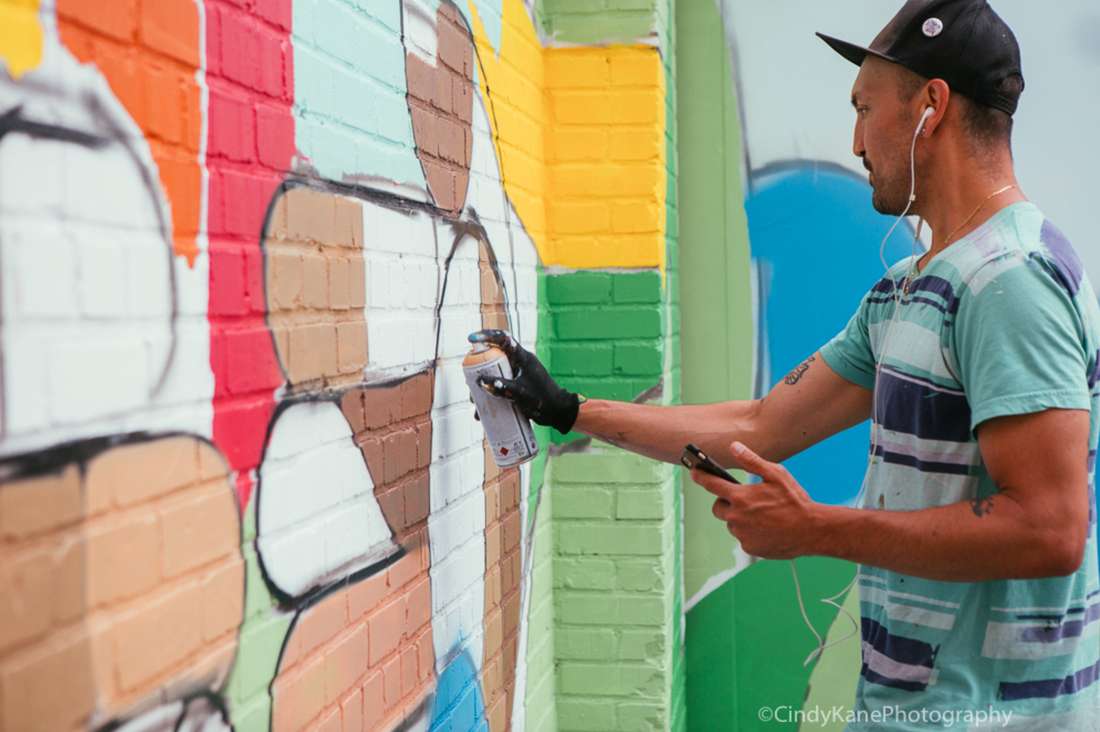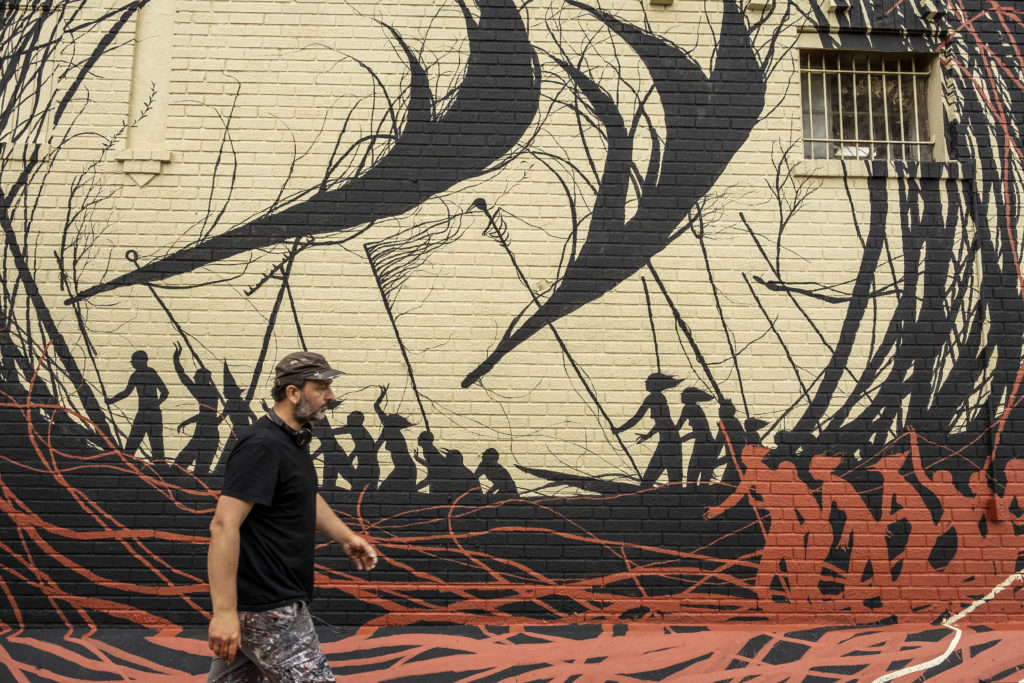The cement spheres of “Dark Star Park” in Rosslyn, the electric blue ribbon of “Dressed Up and Pinned” in Courthouse and the twin striped monoliths of “Echo” in the park at Penrose Square.
These are some of the roughly 70 permanent public art projects in Arlington, commissioned for county capital improvement projects, sponsored by developers or initiated by communities.
Made with cement, steel and stone, these permanent projects are built to last, such as “Dark Star Park,” installed in 1984. The focus on permanent art installations — in particular those integrated into large capital projects — is intentional, according to Arlington’s Public Art program, a subdivision of Arlington Economic Development’s Cultural Affairs division.
“For as long as you have me leading the program for Arlington County, you’re going to have someone fighting for the very difficult work of integrating public art into larger county capital projects,” Public Art Administrator Angela Adams said in a recent Planning Commission meeting. “It’s not the easy thing to do. Temporary public art is the easy thing to do. Murals are the easy thing to do. We don’t do murals: we assist the community to do their own murals.”
The county considers murals, which can last a few decades if maintained well, temporary public art. Most recently, the program provided assistance for the creation of the John M. Langston mural at Sport Fair by KaliQ Crosby.
The county’s emphasis on sculptures over murals and other temporary works received some pushback from Planning Commission members during a discussion about the county’s Public Art Master Plan, which is being updated to reflect modern times.
After multiple years of community engagement and study, arts staff drafted an update to the plan — first adopted in 2004 — that reached the County Board last Saturday. Members approved a request to advertise a public hearing on the updated document next month, ahead of a vote on whether to adopt it.
“It’s a strategy for how public art will improve the quality of our public spaces,” Board Chair Matt de Ferranti said during the meeting. “We each got briefed on this. I think it’s important.”
The Public Art program’s current emphasis on sculptures and other installations, like the lighted bridge over Route 50 near Courthouse and Corridor of Light in Rosslyn, prioritizes the permanent over the ephemeral, quality over quantity. But it also comes at a cost, often requiring significant funding and years of planning. Plus the artists with the reputation and know-how to create such art in many cases come from out of town.
By contrast, the public art one more commonly sees posted on social media these days are of the more temporary variety: Instagrammable murals and community-created installations. Cheaper and impermanent, such art has the possibility of being more ubiquitous around town and more reflective of the current moment and the local flavor. Such is the case with a mural unveiled over the summer in the Town of Vienna, a set of painted, social-media-ready butterfly wings designed by a graduate of a local high school.
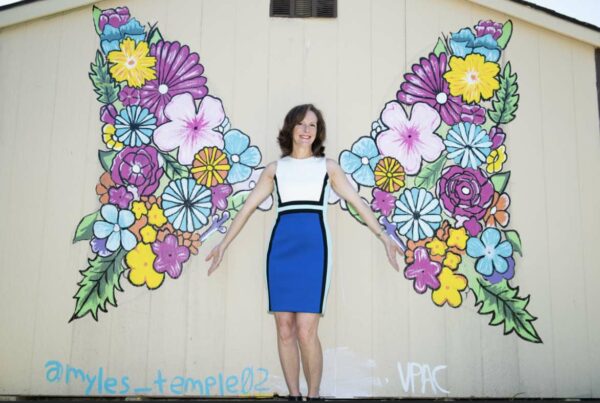
Public art by the numbers
Since the 1970s, Arlington County and private developers have completed more than 100 permanent and temporary works of public art. But it wasn’t until 2004 that a systematic approach, called the Public Art Master Plan (PAMP), was codified.
More than 25 permanent projects have been completed or are in progress, while more than 30 temporary works have been commissioned or supported since the PAMP was adopted, the updated plan says. These are funded by county capital improvement funds and developer contributions to the Public Art Fund.
Developers have completed and commissioned more than 25 works to adorn their sites, Public Art program spokesman Jim Byers, Jr. said. Most developers (65%) contribute to the Public Art Fund, which has received 59 contributions since 2004 and today maintains a balance of $3 million, he said.
Their coffers go a long way, Byers said, as “developer and partner funding leverages the county Public Art funding by nearly 25:1.”
Out with the old, in with the new
Despite its successes, the PAMP update says the county’s public art approach needed a fresh coat of paint “to support the County’s civic engagement, planning, economic development and placemaking.”
Among other new priorities, the new plan emphasizes audience development and engagement and equity, and identifies two new priority corridors: Langston Blvd and the Potomac Riverfront. The existing priority corridors are Rosslyn-Ballston, Richmond Highway, Columbia Pike and Four Mile Run.
Audience engagement is a priority because residents seem to know little about the program, the plan admits. It calls for more programming to engage folks and more accessible information about projects.
“One of the things the research showed is that the Arlington community is not fully aware of the breadth of the County’s public art resources,” the PAMP continues. “It is important not only to commission new works, but also to find ways to keep existing artworks fresh in people’s minds.”
Another top emphasis, equity, proved to be a sticking point for the Planning Commission. Some members argued the plan needed stronger language to ensure art reaches less wealthy areas and more diverse artists are chosen.
Otherwise, Commissioner Stephen Hughes said, only the the areas with well-resourced developers will have beautiful art, and areas like Columbia Pike will fall behind, despite promises of permanent art.
“When you want to push to get art in underserved communities that don’t have the resources, you actually have to redirect resources from one section of the community to another with conscious thought, and that requires teeth in the language,” he said.
Adams attributed difficulties to integrating art into Columbia Pike developments to the Form-Based Code governing projects.
Ahead of the County Board meeting, a staff report says “language was strengthened on the work that the Public Art Program has been doing in this area and how staff plans to continue its commitment to equity and diversity, specifically around diversity in themes, artists and locations.”
The role of temporary art
Others brought up temporary art as a way to reach underserved communities more quickly and involve early-career artists.
“I don’t think we can just discount the value of temporary art,” Planning Commissioner Elizabeth Morton said. “It’s often used as an incubator to teach young artists how to work at a large scale on an expensive project. I don’t think it has to be an either-or. I don’t want to lose sight of the topicality, edginess, the quickness, the diverseness that temporary art can provide.”
Planning Commission Chair Jim Lantelme pointed out that murals are often community-driven. The Halls Hill area, for example, has two murals, one recounting the community’s history and the other — on the renamed Langston Blvd — depicting activist John M. Langston.
“The distinction between permanent and temporary, we have to be really careful that one isn’t seen as inferior to the other, especially if it’s something the neighborhood wants and it enhances the overall feel,” he said.
Commissioner Sara Steinberger said temporary art installations highlight additional voices and get art into places “where it’s not as easy to get art.”
Byers later affirmed to ARLnow that temporary art can achieve those ends and more.
“[Temporary art] can address several goals: promoting interest in County policies and priorities (walking, bicycling, recycling, waste reduction, etc.), dispersing public art projects more widely throughout the County, providing opportunities for local artists with a diverse range of practices to experiment and gain experience, and demonstrating the catalytic role public art can play in transforming the identity of a place,” he said.
On these, the Public Art Program acts only as a resource to business improvement districts, partnerships and other organizations and community groups undertaking these projects, he said.
In addition to the Langston mural, Byers said the Public Art Program has provided support on several murals in recent years, including two on Langston Blvd: “Change Begins Inside” by David de la Mano at KH Art and Framing and “Community” by MasPaz at Cowboy Cafe.


